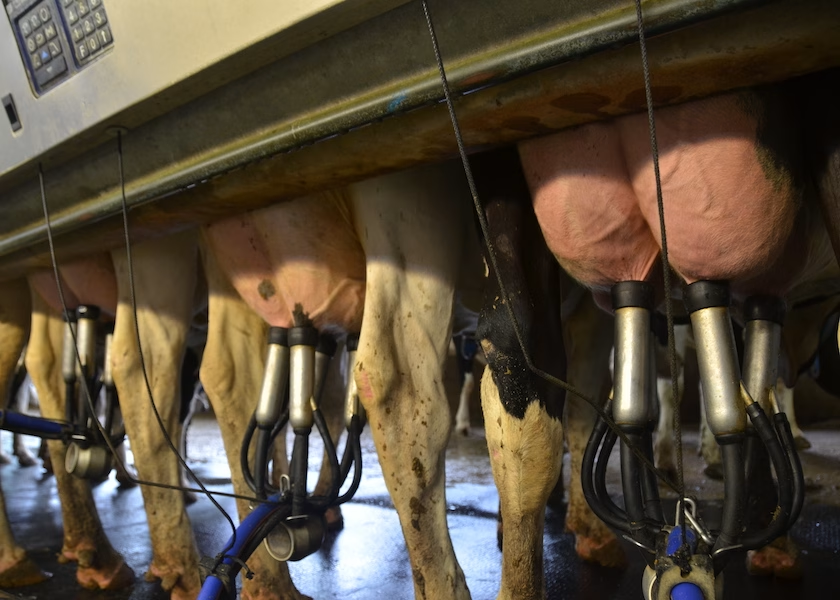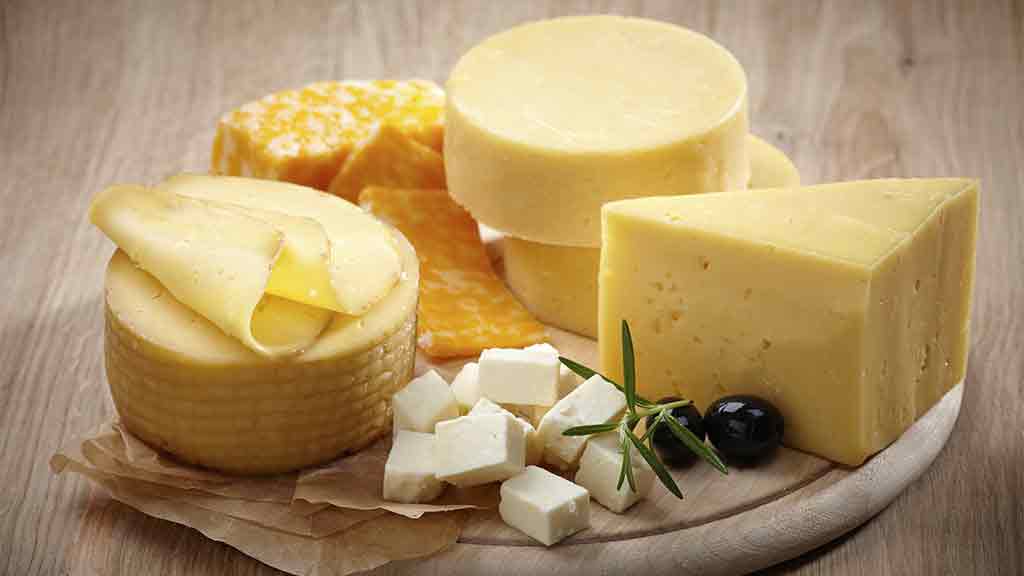Learn how honey in yogurt boosts digestion and sleep. Please find out about the new science and its effect on yogurt sales.
Summary: Good news for dairy farmers: Yogurt is gaining attention due to its health benefits. Two new studies from the University of Illinois Urbana-Champaign show adding honey to yogurt supports probiotic cultures and improves sleep. This discovery comes as the U.S. yogurt market hits $11.43 billion this year, with projections climbing to $18.2 billion in North America by 2029. These findings offer opportunities. One study published in the journal Heliyon highlighted reducing sleep disturbances by 4% through probiotic consumption. Another study found that clover honey in yogurt boosts digestive health by supporting probiotic survival. This combination can attract health-conscious consumers. Clover honey helps probiotics thrive, while Manuka honey’s antibacterial properties make yogurt even more appealing. Dairy farmers can leverage this by offering various yogurt types, like Greek or honey-infused, to boost sales and cater to the growing market.
- Adding honey to yogurt can enhance probiotic cultures, which is vital for gut health.
- Consuming yogurt with probiotics may improve sleep quality.
- The U.S. yogurt market is booming, valued at $11.43 billion, and expected to grow further.
- Probiotics reduce sleep disturbances by 4%, according to recent studies.
- Yogurt’s share of U.S. milk solids and milkfat production has significantly increased over the past decade.

Recent scientific studies show that adding honey to yogurt not only sweetens it but also makes it healthier. Consider the possibilities: by including honey in your yogurt manufacturing process, you might promote critical probiotic cultures that help digestive health and, according to U.S. research, even enhance sleep. Honey and yogurt have been demonstrated to increase the viability of probiotics and improve digestive health. These findings are more than good news; they provide a unique and empowering opportunity for dairy producers to meet the rising customer demand for functional and nutritious products. So, what measures can you take to capitalize on these advantages and grow your market share?
The Science Behind Honey-Infused Yogurt: A Game Changer for Digestive Health
The science behind this finding adds to its excitement. The University of Illinois at Urbana-Champaign researchers thoroughly analyzed how various kinds of honey impact bacterial viability in yogurt. The research, published in the Journal of Nutrition, offers essential conclusions concerning the function of honey in digestive health.
In their first investigation, the researchers investigated the effects of four distinct types of honey on Bifidobacterium animalis in yogurt. Using a lab-simulated digestion process, they discovered that yogurt containing honey, particularly clover honey, increased probiotic survival throughout the intestinal phase of digestion. Specifically, clover honey was shown to be very beneficial. This variety of honey increased the survival rate of helpful probiotics more than the other types studied.
The research concluded that “Clover honey significantly improved probiotic survival rates during digestion, suggesting its potential as a functional food ingredient” (Journal of Nutrition). A follow-up investigation of 66 healthy individuals verified similar findings, lending real-world relevance to the lab data.
The repercussions are significant. Farmers and manufacturers might improve yogurt’s health advantages by adding honey, particularly clover honey, to the product, providing customers with a powerful digestive aid.
Yogurt and Your Sleep: Unlocking Nightly Rest with Probiotics
Let’s look at how yogurt may help you sleep better. The new research published in Heliyon looked at the sleep habits of 49,000 people in the United States and found substantial advantages associated with yogurt intake. Those who routinely consumed yogurt or other probiotics reported fewer sleep disruptions. In numerical words, taking probiotics reduced the likelihood of having sleep problems by 4%.
This discovery is more than another bullet point; it serves as a lighthouse for individuals suffering from sleeplessness. Probiotics, the good bacteria found in yogurt, play an essential role in gut health and are closely linked to sleep quality. Researchers think that a healthy gut flora influences the synthesis of sleep-regulating chemicals such as serotonin and melatonin.
These findings are encouraging, mainly when seen from a larger perspective. As consumers become more health aware, they seek foods that provide functional nutrition. Yogurt is an excellent match for this trend since it aids digestion and improves sleep. The next time you think about methods to help your sleep, a cup of probiotic-rich yogurt might be the solution.
A New Era for Dairy: Capitalizing on Yogurt’s Market Boom
It’s an exciting moment to be in the yogurt business. Current patterns indicate that we are on a vast market growth threshold. According to Mordor Intelligence, the U.S. yogurt business is worth $11.43 billion. Next year, demand is predicted to increase by 5.08%. By 2029, the North American yogurt market (including Mexico and Canada) is expected to reach $18.2 billion. This equates to a compound annual growth rate of 3.05% between 2024 and 2029. This growth presents a significant opportunity for dairy producers to expand their market share and increase their profits.
So, what is driving this extraordinary growth? One important reason is the vast diversity of options accessible to customers nowadays. Numerous flavors and brands enhance the market, each giving something unique to satisfy a wide range of customer preferences. This explosion of alternatives draws a larger audience and encourages current yogurt fans to explore new flavors.
These changes provide several possibilities for dairy producers. As consumer interest in yogurt grows, producers may profit from the increasing demand for milk and other dairy products required for yogurt manufacturing. Furthermore, adding new tastes and probiotic-infused alternatives may help distinguish items in a competitive market, thereby increasing profit margins and educating dairy producers about the potential for growth in their business.
Functional Nutrition: The Health-Conscious Consumer’s Shift
Today’s customers are more health-conscious than ever, looking for food items that provide more than just nutrition. This increased emphasis on functional nutrition, which highlights the health advantages of certain nutrients, has substantially impacted market patterns. Yogurt is ideally suited to this transition. Recent research on the benefits of yogurt—a boost to digestive health when coupled with honey and enhanced sleep quality due to its microbial content—only adds to its appeal.
Yogurt’s growing percentage in U.S. milk solids and milkfat output over the last decade supports this trend. In the previous decade, yogurt accounted for 3% to 4% of U.S. milk solids output, up from 1% to 2% in the early 2000s. Similarly, its percentage of U.S. milkfat production increased from 0.6% between 2000 and 2009 to 0.9% between 2013 and 2022. These numbers show that yogurt is a food necessity and a thriving component of the dairy business.
Exploring the Best Honey Varieties for Yogurt
So, which varieties of honey go best with yogurt? The Illinois research provided us with significant information. Clover honey stood out for its ability to help bacteria survive throughout digestion. But let us not stop there. Other varieties of honey may have comparable advantages.
- Clover Honey
As previously indicated, clover honey has been demonstrated to increase the viability of B. animalis in yogurt. Its moderate taste profile and natural sweetness make it a popular option. Clover honey may help you pitch your yogurt as tasty and healthy for intestinal health. - Manuka Honey
Manuka honey, recognized for its potent antibacterial qualities, might be a game changer. While not explicitly examined in the research, its unique components may provide additional health advantages. Consider using Manuka honey to attract health-conscious customers. - Wildflower Honey
Wildflower honey, with its different floral origins, may give yogurt a rich taste. Although the research did not include it, its antioxidant effects may enhance yogurt’s probiotic advantages.
Promoting various honey variants offers your clients additional alternatives and reasons to buy yogurt. Fusing yogurt with several types of honey improves its flavor. It supports general health, making it an appealing alternative for today’s health-conscious customers. Give your marketing initiatives a sweet boost with these honey insights!
Dairy Farmers: Capitalize on Yogurt’s Health Boom for Big Profits
For dairy producers, the growing popularity of yogurt represents an excellent potential to increase income sources. Farmers may capitalize on this trend to increase income as demand for yogurt rises due to its newly discovered health advantages. Consider the economic landscape: the U.S. yogurt industry, valued at $11.43 billion, is expected to continue increasing. But how can farmers prepare to surf this wave?
First, variety is essential. A diverse range of yogurt flavors and types—Greek, flavored, or honey-infused—can appeal to a more extensive customer base. Farmers should experiment with several product lines to find the best for their market. Collaborating with local honey producers might be a wise decision. Farmers who promote local honey in their goods might appeal to customers who value locally-produced, sustainable ingredients.
Marketing efforts should focus on the yogurt’s unique health advantages and quality. Use social media and local activities to spread the word. Testimonials and relationships with health influencers may be social proof, increasing consumer trust and interest.
Furthermore, strategic relationships with merchants may broaden market reach. Offering samples at local grocery stores, attending farmers’ markets, and investigating e-commerce opportunities may enhance awareness and sales.
Finally, it is critical to remain current with industry changes and customer preferences. Regularly analyzing market information, visiting dairy and food industry conferences, and networking with other farms may provide valuable insights and opportunities for expansion.
Embracing these tactics creates new income streams and promotes dairy producers as forward-thinking and adaptable in a constantly changing market.
Honey-Infused Yogurt: A Sweet Strategy for Health and Sales
Incorporating honey into yogurt enhances its health benefits and provides a unique selling point. Here are some practical tips:
- Suggestions: Start with a plain yogurt recipe and add locally procured honey. For a balanced flavor, use two teaspoons of honey per cup of yogurt. Experiment with several honey kinds, such as clover, wildflower, and manuka, to generate unique taste profiles.
- Layered Parfaits: Create stacked yogurt parfaits to give customers a visually attractive product. Alternately layer yogurt, honey, granola, and fresh fruit. This not only improves the flavor but also the visual appeal, making it Instagrammable.
- Mixed-In vs. Topping: Provide alternatives for incorporating honey into the yogurt or using it as a topping. Some customers prefer to mix their own, while others appreciate the convenience of a pre-mixed product.
- Packaging Ideas: Invest in transparent containers to highlight the layers and hues of honey-infused yogurt. Include easy-to-read labeling that emphasizes the health advantages of honey and probiotics. Consider adopting eco-friendly packaging to attract ecologically conscientious customers.
- Quality Sourcing: Collaborate with trusted local beekeepers and organic honey providers. Ensuring honey quality is critical; search for raw, unfiltered honey to retain most of its natural benefits and tastes.
- Seasonal Flavors: Rotate seasonal honey-infused yogurt varieties to keep the product range new and exciting. For example, spring flower honey may be used in spring and summer mixes, while darker, more robust honey can be used in autumn and winter.
- Promotional Strategies: Highlight the advantages of honey-infused yogurt in marketing materials. Use social media to promote health advantages, consumer testimonials, and new recipe ideas. Collaborate with local health food businesses and wellness influencers to disseminate the message.
Dairy producers may use these techniques to develop a distinctive, wholesome, attractive yogurt product that stands out in the competitive market.
The Bottom Line
The data is precise: yogurt, especially when coupled with honey, has considerable health advantages that may pique consumer interest and drive market expansion. These results, which range from digestive health to improved sleep quality, provide a strong argument for dairy producers to innovate. With the U.S. yogurt industry primed for further development, integrating honey into yogurt products might help you stand out and fulfill the rising need for functional meals. Seize this chance to increase sales while benefiting your customers’ health and well-being.

















